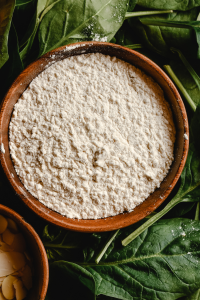DMP: Double Milk Powder role in cakes Clarified
Table of Contents
ToggleDouble Milk Powder (DMP)
Double Milk Powder, often abbreviated as DMP, is a specialized dairy product known for its high milk solids content. It is made by evaporating milk to remove moisture, resulting in a fine powder that retains all the nutritional benefits and flavor of milk. What sets DMP apart from regular milk powder is its double concentration of milk solids, making it richer and creamier when reconstituted with water. Check out the right Double Milk Powder, cake tools, and ingredients that you need here.

The Role of DMP in Cakes
When it comes to baking cakes, DMP acts as a versatile ingredient that contributes to both texture and taste. Here’s how it makes a difference:
Enhancing Moisture
DMP is hygroscopic, meaning it attracts and retains moisture. In cake recipes, adding DMP helps to keep the cake moist and soft over time. This is particularly beneficial in layered cakes or those that require extended storage without compromising on freshness. Check out the right Double Milk Powder, cake tools, and ingredients that you need here.
Boosting Flavor
Due to its concentrated milk solids, DMP adds a depth of flavor to cakes that regular milk powder cannot match. It imparts a subtle creamy sweetness that enhances the overall taste profile of the cake, making each bite more satisfying.
Improving Texture
The fine particles of DMP integrate seamlessly into cake batters, resulting in a smoother texture. Cakes baked with DMP tend to have a finer crumb structure and a velvety mouthfeel, which is desirable in many cake varieties, from sponge cakes to pound cakes.
Practical Application in Baking
To incorporate DMP into your cake recipes, simply substitute a portion of the flour with DMP. Typically, 1 to 2 tablespoons per cup of flour is sufficient to achieve noticeable improvements in texture and moisture retention. Ensure to dissolve DMP in the liquid components of your recipe before adding to the dry ingredients for even distribution.
Double Milk Powder is not just another pantry staple; it’s a secret weapon for achieving bakery-quality cakes at home. Its ability to enhance moisture, boost flavor, and improve texture makes it a valuable addition to any baker’s toolkit. Check out the right Double Milk Powder, cake tools, and ingredients that you need here.

Comparing DMP with Other Dairy Products
When drilling deeper into the realm of dairy products used in baking, it’s essential to compare Double Milk Powder (DMP) with other common options to understand its unique advantages:
DMP vs. Regular Milk Powder
Composition: Regular milk powder contains approximately 30% milk solids, whereas DMP boasts double the concentration at around 60-65% milk solids.
Functionality: DMP, due to its higher milk solids content, offers superior moisture retention and flavor enhancement compared to regular milk powder. It provides a richer taste and creamier texture in baked goods.
Application: While regular milk powder is suitable for general purposes like coffee creamers or basic baking, DMP excels in recipes where a more pronounced dairy flavor and improved moisture are desired, such as in cakes, pastries, and confections. Check out the right Double Milk Powder, cake tools, and ingredients that you need here.
DMP vs. Condensed Milk
Texture: Condensed milk is thick and sweetened, primarily used for its viscosity and sweetness in recipes. In contrast, DMP contributes richness and moisture without the overwhelming sweetness, making it more versatile in various baking applications.
Usage: Condensed milk is typically used as a sweetener and texture modifier in desserts like fudge or caramel, whereas DMP serves as a dairy enhancer without altering the sweetness level significantly.
Nutritional Value: DMP retains the nutritional benefits of milk in a concentrated form, whereas condensed milk, while rich in calories and sugars, lacks the same concentration of milk solids and nutrients. Check out the right Double Milk Powder, cake tools, and ingredients that you need here.
comparison tabular
Here’s a comparison table highlighting the key differences and considerations between Double Milk Powder (DMP), Regular Milk Powder, and Condensed Milk in baking:
| Aspect | Double Milk Powder (DMP) | Regular Milk Powder | Condensed Milk |
|---|---|---|---|
| Milk Solids Content | Approximately 60-65% | Approximately 30% | Varies, but lower than DMP |
| Texture in Baking | Enhances moisture and richness | General-purpose, less concentrated | Thick, sweetened, alters sweetness |
| Flavor Contribution | Rich, creamy | Subtle dairy flavor | Sweet, alters sweetness |
| Moisture Retention | Excellent | Moderate | High, due to sugar content |
| Usage | Ideal for cakes, pastries, confections | General baking applications | Desserts, confections, sweet recipes |
| Nutritional Value | Concentrated milk solids, retains nutrients | Contains milk solids, nutrients | High in calories, sugars |
| Sweetness Level | Neutral | Neutral | High, sweetened |
| Application Tip | Dissolve in liquid for even distribution | Incorporate directly into dry | Use as sweetener and texture modifier |
Key Notes and Considerations:
- Milk Solids Content: DMP contains the highest concentration of milk solids among the three, enhancing both flavor and texture significantly.
- Texture in Baking: While DMP and regular milk powder enhance moisture, condensed milk primarily alters texture and sweetness due to its sugar content.
- Flavor Contribution: DMP adds a rich, creamy taste without altering sweetness, making it versatile for various baked goods.
- Moisture Retention: DMP excels in maintaining moisture in cakes and pastries, while condensed milk’s high sugar content contributes to moisture in desserts.
- Usage: Choose DMP for recipes requiring enhanced dairy richness, regular milk powder for general baking, and condensed milk for sweet desserts.
- Nutritional Value: DMP and regular milk powder retain milk nutrients, while condensed milk is higher in calories and sugars. Check out the right Double Milk Powder, cake tools, and ingredients that you need here.
FAQs on Double Milk Powder (DMP) in Baking
Q: What is the difference between Double Milk Powder (DMP) and regular milk powder in baking?
A: Double Milk Powder (DMP) contains approximately 60-65% milk solids, whereas regular milk powder has around 30% milk solids. DMP offers richer flavor and better moisture retention compared to regular milk powder.
Q: How do I use Double Milk Powder (DMP) in my cake recipes?
A: You can incorporate DMP by substituting a portion of the flour with it. Generally, 1 to 2 tablespoons per cup of flour is recommended. Dissolve DMP in the liquid components of your recipe before adding to ensure even distribution.
Q: Can I substitute Double Milk Powder (DMP) with regular milk powder in recipes?
A: Yes, you can substitute regular milk powder for DMP in most recipes. However, be aware that regular milk powder may not provide the same level of richness and moisture retention as DMP.
Q: Is Double Milk Powder (DMP) suitable for people with lactose intolerance?
A: DMP, like other milk products, contains lactose. Individuals with lactose intolerance should use lactose-free alternatives or consider their tolerance level before using DMP.
Q: Where can I purchase Double Milk Powder (DMP)?
A: Double Milk Powder (DMP) is available in specialty grocery stores, baking supply shops, and online retailers. Ensure to check the label for quality and milk solids content. Check out the right Double Milk Powder, cake tools, and ingredients that you need here.
Final Words
Incorporating Double Milk Powder (DMP) into your baking can elevate your creations to new heights, enhancing moisture, flavor, and texture effortlessly. Whether you’re a novice baker or a seasoned pro, experimenting with DMP opens up a world of possibilities for delicious cakes, pastries, and more. Don’t hesitate to explore its potential and enjoy the delightful results it brings to your homemade treats!

Hi!
I’m Mike, the creator of Forum Foodies. In my own personal experience, understanding ingredients is key to great cooking.
Forum Foodies offers guides on various ingredients, from staples to exotic finds. Join our community, share your experiences, and learn from fellow food lovers.
Have questions or suggestions? Email me at info@forumfoodies.com. Let’s embark on this delicious adventure together.
Happy cooking.
Mike/
Related Posts
- AHM: Almond Milk role in cake Making Explained
In this topic, I'm going to talk about almond milk and its role in cakes.…
- EBC: Elderberry Compote role in cakes Clarified
In this topic, I'm going to talk about the delightful addition of Elderberry Compote in…
- CFC: role in cakes Clarified
In this topic, I'm going to talk about coconut flour and its role in cakes,…
- DTS: Double Boiler role in cake making Clarified
In this topic, I'm going to talk about a crucial tool in cake making: the…
- DAC: role in cakes Clarified
In this topic, I'm going to talk about DAC - Date-Almond Cake in my own…
- CLM: Cherry Lemon Meringue role in cakes Clarified
In this topic, I'm going to talk about the Cherry Lemon Meringue (CLM), drawing from…
- CHC: Caramel Chai Cookie role in cakes Explained
In this topic, I'm going to talk about the role of CHC - Caramel Chai…
- FBC: role in cakes Clarified
In this topic, I'm going to talk about Fig Buttercream Cake (FBC) in my own…
- AFS: Almond Flour Sponge role in cakes Clarified
In this topic, I'm going to talk about the role of almond flour sponge in…
- BHF: Buttercream Hazelnut Filling role in cakes Clarified
In this topic, I'm going to talk about a delightful ingredient in baking: Buttercream Hazelnut…
- BPC: role in cakes Explained
In this topic, I'm going to talk about BPC - Blueberry Puree Cake, drawing from…
- BB: Biscuit Barrel role in cakes making Clarified
In This Topic, I'm Going to Talk About the BB - Biscuit Barrel In my…
- BCF: Blackberry Caramel Frosting role in cakes clarified
In this topic, I'm going to talk about Blackberry Caramel Frosting (BCF) in my own…
- FAF: Frosted Almond Flakes role in cakes Clarified
In this topic, I'm going to talk about Frosted Almond Flakes (FAF) and their role…
- EBF: Espresso Buttercream Frosting role in cakes Clarified
In this topic, I'm going to talk about Espresso Buttercream Frosting (EBF) in my own…






